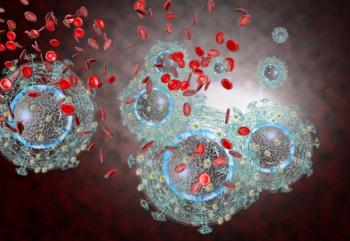
Triangles - Not from Bermuda, Yet
A triangle ? an inverted black triangle ? will be seen on the pack leaflets and summary of product characteristics (SPC) of certain medicines in Europe from next week.
A triangle – an inverted black triangle – will be seen on the pack leaflets and summary of product characteristics (SPC) of certain medicines in Europe from next week. This will be the culmination of a complex series of European legislative debates over the last five years, in which issues of medicines safety and information became entangled.
The triangle will designate a new medicine that is subject to additional monitoring by regulatory authorities. It covers medicines authorized after 1 January 2011 that contain a new active substance, and biological medicines for which there is limited post-marketing experience. It must also appear on leaflets and SPCs of medicines with a conditional approval or approved under exceptional circumstances, and medicines for which the marketing-authorization holder is required to carry out a post-authorization safety study. Other medicines can also be placed under additional monitoring, based on a recommendation from the European Medicines Agency's Pharmacovigilance Risk Assessment Committee.
The European Parliament is taking credit for setting up the scheme. It claims that this will inform patients better and allow for potential side-effects to be identified and acted upon quickly. "If people are taking drugs that the medical establishment is closely monitoring for potential side-effects then patients have a right to know" said Linda McAvan, the UK socialist MEP who steered the legislation through the parliament. "There's absolutely no reason why this information needs to be locked away from the public. It is often patients' own experiences that alert the authorities to potentially dangerous side-effects," she added.
The scheme was adopted within the context of the new pharmacovigilance rules that the European Union created over recent years – a period beset by widespread concerns over the reliability of European regulators and undue influence of drug firms in keeping information away from patients and the public.
The initiative was doubtless well-intentioned. But it may not be immune to the law of unintended consequences. The European parliament insists: "If a medicine is labelled with the inverted black triangle, it does not mean that it is unsafe." The bemused public might well wonder, then, why it bears this sinister distinguishing mark. The public may not quite grasp the nuance in the parliament's explanation that "the purpose of the symbol is to actively encourage healthcare professionals and patients to report any suspected adverse reactions to the medicine." Nor is the public likely to be reassured by the further justification: "either because it has been newly introduced to the market or because there are only limited data available on its safety."
The European Medicines Agency falls into an even deeper trap with its publication of the first list of medicines that are subject to the triangle requirement. "All medicines on the European Union market are carefully monitored," it says – then going on to explain why some medicines are to be labelled with the inverted black triangle. This is not convincing, above all to the lay reader. If all medicines on the EU market are carefully monitored, why is there a need for extra monitoring? Or, more disturbingly, if there is a need for extra monitoring, does this not by definition mean that current monitoring is not sufficiently careful? It is reminiscent of those vacuous road signs urging people to "drive with care" on particular sections of a route – suggesting that elsewhere they can comfortably nod off.
The risks are all too clear. Patients may be frightened off taking the medication they need. And regulatory authorities may be perceived as not just incompetent, but confused. Everyone taking, marketing or authorizing medicines could find they are flying dangerously close to that Bermuda triangle in which so many innocent venturers have disappeared without a trace.
Newsletter
Stay current in clinical research with Applied Clinical Trials, providing expert insights, regulatory updates, and practical strategies for successful clinical trial design and execution.





.png)



.png)



.png)
.png)
